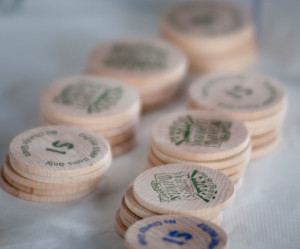
When I began my internship with the Solutions to Senior Hunger program last September, all I could have told you about food stamps was that they existed. However, I believe in knowing what I represent, and since my internship with JFS is outreach to help people sign-up for the government’s Supplemental Nutritional Assistance Program (SNAP), I’ve learned about the program. Here are four facts that are important to know about food stamps:
One application, many resources.
Washington State uses the same application for its food, cash, health and care programs, so people can apply for all their basic needs benefits at the same time. The application can also connect people with job trainings and employment resources. This process can be completed at home. The entire application is available online, and you can select the programs you want to apply for with the click of a button.
Not a citizen? Not a problem.
All you need to apply is a social security number—which can be obtained with proof of immigration status. The food stamp program exists to help low and very-low income people meet their basic needs. Therefore, anyone living legally in America – citizen or not – is entitled to be helped. The social security requirement exists so that SNAP can check reported earnings and make sure beneficiaries are able to work (health permitting). Visit the SNAP website to see the complete list of eligibility requirements.
No matter what your age, SNAP can help.
Eligible seniors and youth are more likely than other groups not to enroll in SNAP.
It is a common misperception that youth ages 18 and under require adult approval to receive public assistance. This is not true. If a minor can establish that they are living independently (defined here), they can apply without a guardian. If they are living with others who are in need, they can choose to apply as part of that household or on their own.
Two-thirds of seniors age 50 and over who are eligible for food stamps do not actually apply. A reason for this is that the application can be difficult for those who are not tech-savvy, do not own a computer or are unfamiliar with the process. JFS and some other social service agencies have employees who are trained to assist with applications. King County also provides a free assistance hotline at 1-800-756-5437.
SNAP is a relief program – not a cure.
I was struck by the number of people I met during outreach events in Seattle food banks who were already receiving food stamps. Then, I realized that I had made the assumption that SNAP was designed to fully support the food costs of a household. However, it is called the Supplemental Nutritional Assistance Program, and as the name suggests, it is meant to supplement a larger network of food support programs. It has the same goal as food bank programs—to help people access food.
Both food banks and SNAP are food assistance programs, but SNAP is a government program and food banks are community programs. The Polack Food Bank provides the local community with groceries and basic needs items and promotes SNAP. Even though a food bank is not connected to SNAP, it is still in its best interest to help people apply to the program. Together, these programs can help our neighbors achieve stability, which in turn strengthens our communities.
By Kevin Plissner
Kevin Plissner is an intern with the Emergency Services team at JFS and a sophomore Humanities in Leadership major at Seattle University. He enjoys Ultimate Disc, music, adventures of all sorts and is always eager to learn.
Feature photo by the U.S Department of Agriculture.



